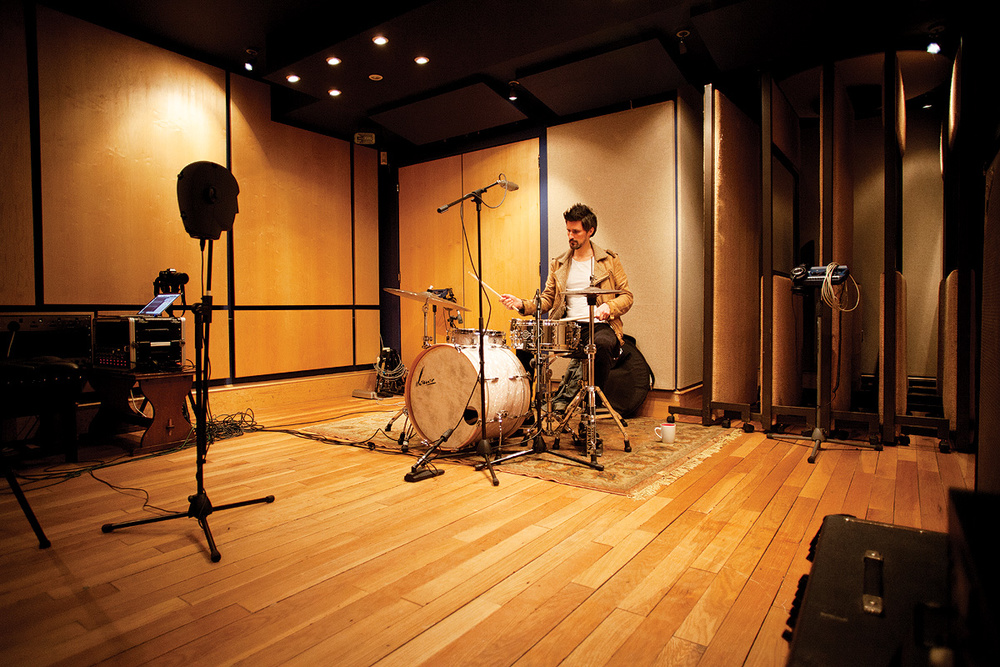
Recorded Drums vs Programmed Drums
The ever debated topic of recorded drums versus programmed drums will always be a huge topic that musicians and music producers will jump upon to state why one is better than the other. Musicians will side with live acoustic drums most of the time especially when the musician is a drummer while producers would rather program drums from their favorite samples. The whole argument of getting the right tone ready for mix without fixing it a mix is something that producers will always side with, while a drummer/musician would want to put in the effort of getting the right cymbals, right heads for the toms, snare etc. so that the source sound is the best and then comes micing it the right way and trusting the recording engineer to capture the best possible sound using the right microphone (expensive condenser mics), the next is the dynamics and performance captured while performing which you can never get through a programmed drum is something musicians will argue.
Let’s look at all the pros and cons of both approaches
- Time vs Effort
The time and effort to record a drum from scratch from setting it up the right way to micing it to mixing it is obviously a lot more work and would need more time. Going to a professional studio that can deliver a good drum recordings, has a good room to record drums and have efficient recording engineers would take nothing less that 4 hours to record drums for a song from scratch with extra takes in the playlists and that is if the musician is well versed with his parts and is well prepared before the recording session.
For programmed drums there are different ways where you can program drums using a mouse and a piano roll or you can connect your midi keyboard or take it to the next level of connecting the DAW to an Electronic Drum Kit to get the velocities right
2. Dynamics
The difference between the dynamics of a live drum recording and the drums that are programmed can be heard quite easily. Dynamics is basically the intensity with which the drummer plays the drums in each section. A live human playing the drums would feel and groove along with the song and perform thus getting across the feeling better. The dynamics for programmed drums can be controlled or replicated by assigning velocities to each hit, but this only means playing louder or softer and an emulation of how the drummer would play. In terms of dynamics live drums have a huge advantage and would sound much better too, but nowadays vsts are getting more advanced and better.
3. Drum Tone
Drum tone cannot be changed once it’s set and recorded for live drums. For example if the drums recorded had a kick that is not punchy then you cannot change the kick punchy you can tweak the kick but can’t change the recorded tone. While for programmed drums you can change the tone whenever you want you can also process it in your vst to get the desired tone from the kick sample.
4. Customization
When you record drums, the recording engineer records the drums using your drum reference, and uses specific microphones and preamps to capture the desired drum sound. You could say that this drum tone is specially made for this song, hence it’s customized according to the songs need and would fit in better and would obviously sound much better than programming drums which would sound plastic or fake. - Infrastructure
Audio gears, Physical Drum kit, Acoustically treated Room, Microphones, Recording engineer and a drummer are all the things that are needed to record live drums. While for programmed drums you don’t necessarily need to be a drummer and would only need a laptop and a virtual drum machine to replicate the drums.
6. Time Correction
Time correction in terms of live recording and quantization in terms of midi ie. programmed drums.
Time can be corrected only till a certain extent in live drums, if the performance is all over the place and too off time then time correcting would sound even worse. Manual time shifting would be better as the natural drag and rushed feel makes a good song great.
Quantizing programmed drums can be done easily and you can choose the percentage to which extent you want the drums to be tighter to the click, but that does not give the natural dragging and rushed feeling that is needed.
- Fixing errors
If we are talking about errors regarding the “playing” then programmed drums has the liberty to go back to the drawing board and make those changes, for example if the drummer has played the wrong the fill or played the snare in the wrong place then it can easily be deleted on the midi for programmed drums while for live drums its would be next to impossible to go back to the drawing board to remove that snare. You cannot get away by muting the snare in that section because of the snare bleed in other mics.
Now you know all the pros and cons of programmed drums and live drums so which one would you prefer? Let us know down below.

